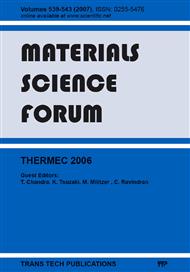p.3118
p.3124
p.3130
p.3139
p.3145
p.3151
p.3157
p.3163
p.3169
Self-Healing of Creep Cavities by Boron Segregation and Boron Nitride Precipitation Autonomously Developed during High Temperature Use
Abstract:
Info:
Periodical:
Pages:
3145-3150
Citation:
Online since:
March 2007
Authors:
Price:
Сopyright:
© 2007 Trans Tech Publications Ltd. All Rights Reserved
Share:
Citation:


